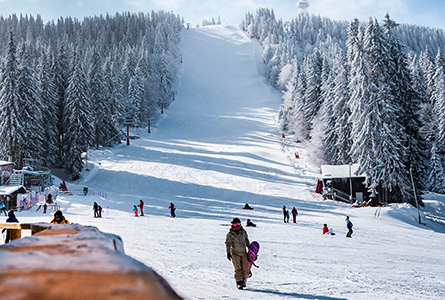Have you ever paused while ascending the chairlift, admiring the picturesque ski slopes, and pondered the peculiar sight of your skis strapped to your feet? While it may seem an unconventional pastime, for many, it's the highlight of the year. Modern ski holidays evoke images of indulging in mulled wine, relishing mountain cuisine, and eagerly awaiting the first runs down the slopes, offering an escape into a week filled with adventure. Yet, the concept of skiing as a leisure pursuit is far removed from its humble origins. Delving into the timeline of skiing history provides valuable insights for elucidating the enduring allure of this winter sport.
Origins of Skiing
The genesis of skiing traces back to antiquity, with evidence suggesting its usage during the last Ice Age, as depicted in cave paintings discovered in Central Asia. Although the precise origins remain obscured, skiing initially served pragmatic purposes, facilitating mobility for hunting and transportation. Among the earliest practitioners were the Sami, an indigenous people inhabiting Scandinavia during the Middle Ages, credited with pioneering skiing as a mode of locomotion.
Invention of Skis
The inception of skis dates back to 8000 BC, with archaeological finds unearthed in northern China revealing wooden skis adorned with horsehair coverings, a stark contrast to contemporary skiing equipment.
Rise of Alpine Skiing
The advent of alpine skiing emerged in the 18th century, evolving from military exercises. Notably, the Norwegian Army orchestrated skiing competitions, encompassing downhill descents, forest navigation, and marksmanship, foreshadowing the modern biathlon event at the Olympics.
Landmark Events
In 1809, Olaf Rye, a Norwegian gentleman, etched his name in history as the inaugural recorded ski jumper, soaring 9.5 meters into the air before an audience of fellow soldiers, a daring feat aimed at showcasing bravery and resilience.
Olympic Inclusion
The inaugural Winter Olympics in 1924, hosted in Chamonix, France, marked a seminal moment for skiing. While the early games featured predominantly Scandinavian disciplines, the inclusion of downhill skiing in the 1936 Winter Games heralded its ascension as a marquee event.
Technological Advancements
Simultaneous with the Winter Games of 1936, the invention of the chairlift revolutionized skiing as a recreational pursuit. The inaugural installation in Sun Valley, Idaho, provided skiers with seamless ascents, transforming the sport by facilitating multiple descents per day.
Contemporary Ski Culture
In the ensuing years, ski resorts burgeoned into vibrant hubs, attracting enthusiasts from across the globe. Laden with an array of amenities, including shops, restaurants, and diverse accommodation options, ski resorts epitomize the enduring influence of skiing.
Pamporovo: A Premier Ski Destination
Pamporovo stands as a beacon among ski resorts, catering to both novice and seasoned skiers and snowboarders. Renowned for its pristine natural environs, rich cultural heritage, and invigorating alpine air, Pamporovo beckons travellers worldwide, offering abundant opportunities for leisure and rejuvenation.








